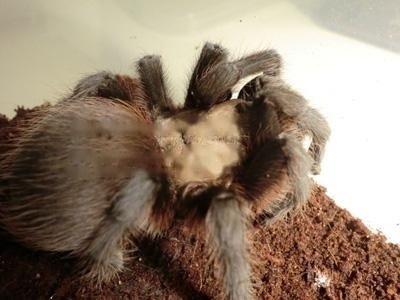
Texas Brown Tarantula
Adult body length is 13-14 cm, suitable temperature is 28-30 ℃, and suitable humidity is 65%. It is recommended to use moist peat, coconut brick and clay as the substrate. It tak
Brazilian giant pink-toed spiderSpider (Latin name: Avicularia braunshauseni) is native to the Brazilian rainforest and looks like an enlarged version of Guyana's pink toe. It is true, however, that many species of the genus Avicularia are very similar. In fact, the giant pink toe is much larger and stronger than the Guyana pink toe, with an adult body length of 17-18 cm.
Chinese name: Brazilian giant pink toe
Latin name: Avicularia braunshauseni
Origin: Brazilian rainforest
Optimum temperature: 26~28℃
Their larvae and the larvae of Guyana pink-toed spiders also look almost nothing The difference is that it has a dark green almost black carapace, orange-red feet, and a black belly with orange-red patterns. The larvae of Pinktoed are easily startled, and they react by running wild or spraying white excrement. However, compared to some arboreal species of other genera, their speed is simply walking.
The suitable temperature is 26~28℃, and the suitable humidity is 85%. It is recommended to use moist peat, Coconut brick and clay are used as substrates. Although the data show that the larvae of the giant pink toe are much stronger and more durable than the larvae of other species of the same genus, in general, the larvae of the genus Pinktoe are much more fragile than other species, and sometimes violent death phenomenon. Therefore, it is necessary to pay attention to humidity and ventilation when raising them. In terms of feeding, since the genus Pseudomonas are timid species, do not choose food that is too large.
The suitable temperature is 26-28℃, and the suitable humidity is 85%. It is recommended to use moist peat, Coconut brick and clay are used as substrates. Although the data show that the larvae of the giant pink toe are much stronger and more durable than the larvae of other species of the same genus, in general, the larvae of the genus Pinktoe are much more fragile than other species, and sometimes violent death phenomenon. Therefore, it is necessary to pay attention to humidity and ventilation when raising them. In terms of feeding, since the genus Pseudomonas are timid species, do not choose food that is too large.